《新概念高级英语写作教程》
| 作者 | 朱源,赵永青主编 编者 |
|---|---|
| 出版 | 大连:大连理工大学出版社 |
| 参考页数 | 385 |
| 出版时间 | 1999(求助前请核对) 目录预览 |
| ISBN号 | 7561116535 — 求助条款 |
| PDF编号 | 88803698(仅供预览,未存储实际文件) |
| 求助格式 | 扫描PDF(若分多册发行,每次仅能受理1册) |
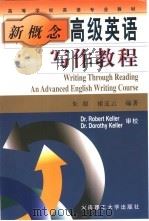
Introduction1
Reading and Writing Processes1
Reading Process1
Reading for Comprehension2
Reading for Thinking3
Reading for Usage Standards4
Reading for Rhetorical Modes5
Writing Process7
Prewriting7
Generating Ideas7
Invention of Generating Ideas8
Reading8
Questions about Readers9
Listing and Brainstorming10
Mapping and Clustering12
Journalist s Questions13
Freewriting14
Imitation14
Outlining15
Developing a Thesis Statement18
Drafting20
Paragraphs20
Methods of Developing and Arranging Paragraphs and Essays21
Introduction,Conclusion and Titles22
Revising23
Reading as a Reader23
Applying a Checklist24
Getting Feedback from Others26
Editing27
Proof Reading28
Chapter 129
Narration: How to Tell a Story29
1.Plan Your Narrative30
2.Decide on Your Point of View30
3.Make a Point31
4.Include Only Significant Details32
5.Pace Your Narrative32
6.Use Consistent Verb Terrse33
7.Use Dialogs33
8.Use Transitions34
A Student Essay34
A Vacation with My Mother34
Analysis38
Ever Green(Janice Anderson)40
“I Just Wanna Be Average”(Mike Rose)47
The Saturday Evening Post(Russell Baker)60
Chapter 274
Description: How to Explore through the Senses74
1.Focus on a Dominant Impression75
2.Use Images in Your Descriptions76
3.Appeal to All the Reader s Senses77
4.Use Strong Action Verbs79
5.Use Specific Nouns80
6.Use Comparisons and Figurative Expressions81
A Student Essay84
Growing up with Fluffy84
Analysis86
Grandma s House(A Student)89
The Pines(John McPhee)94
The Joy Luck Club(Amy Tan)104
Chapter 3115
Exemplification: How to Illustrate Ideas115
1.Find Your Examples before You Begin Writing117
2.Give Appropriate Examples Only118
3.Use Different Kinds of Examples118
4.Provide Transitions and Vary the Introduction to Your Examples120
A Student Essay121
Mom and Dad s Holiday Metamorphosis to Poppa and Granny121
Analysis124
Illusions in Nature(Henry Bastone)126
Darkness at Noon(Harold Krents)133
My Friend,Albert Einstein(Banesh Hoffmann)139
Chapter 4150
Explaining Process: How to Explain Step by Step150
1.Begin with a Clear Statement of What You Are Explaining151
2.Make Each Step of the Process Clear153
3.Identify the Level of Knowledge and Needs of Your Reader153
4.Use Specific Details and Vivid Descriptions153
A Student Essay154
Follow the Simple Directions154
Analysis156
Ditch Diving(Tom Bodett)158
How to Hunt,Clean and Cook a Pheasant-(Robert F。Hanika)163
How to Mark a Book(Mortimer Adler)170
Chapter 5181
Division and Classification: How to Find Categories181
1.Choose a Single Principle for the Classification182
2.Keep Your Categories Intact and Separate183
3.Make the Classification Complete184
4.Give Equal Space to Equal Entries184
A Student Essay185
People on the Slopes185
Analysis187
Four Types of Children(Christine Lavoie)188
Cinematypes(Susan Allen Toth)194
Kinds of Discipline(John Holt)201
Chapter 6210
Comparison and Contrast: How to Discover Similarities and Differences210
1.Choose the Basis of Your Comparison/Contrast210
2.Plan Your Comparison and Contrast Essay212
3.Analogy215
4.Use Words and Phrases That Clearly Draw a Comparison/Contrast215
5.Deal Fairly and Equally with Both Sides216
A Student Essay216
Dormitory Chef216
Analysis218
The Confessions of a Househusband(Jim Sanderson)219
That Lean and Hungry Look(Suzanne Britt Jordan)225
Other Cultures,Other Times(Ann McGee-Cooper)231
Chapter 7 Definition239
How to Limit the Frame of Reference239
A Student Essay245
The Perfect Yuppie245
Analysis248
Why I Want a Wife(Judy Syfers)249
Love: The Right Chemistry(Anastasia Toufexis)254
The Taste of Evil(Mark Baker)262
Chapter 8 Cause and Effect267
How to Trace Reasons and Results267
1.Purpose and Audience268
2.How to Write Your Essay with Cause and Effect268
3.Make a Specific Plan of Your Essay269
4.Set Your Goal271
5.Pitfalls272
A Student Essay273
Why Students Drop Out of College273
Analysis276
Why We Crave Horror Movies(Stephen King)277
Responsible Choices(Coral Watercott)283
Black Men and Public Space(Brent Staples)290
Chapter 9 Argumentation298
How to Incite People to Thought or Action298
1.Goals of Persuasion298
2.Persuasive Appeals299
3.Supporting Your Argument303
A Student Essay308
More Testing,More Learning308
Analysis315
The Wretched of the Hearth(Barbara Ehrenreich)317
A Hard Lesson in Smoking s Danger(Jean Warren)323
Children Need To Play,Not Compete(Jessica Statsky)328
Addendum336
Writers on Writing336
When You Write(Annie Dillard)336
How to Write an Essay(Gilbert Highet)338
How to Write with Style(Kurt Vaonnegut)346
Revising(Donald Hall)350
A Writer s Handbook357
Revising Words357
1.Eliminate redundancies.357
2.Avoid unnecessary repetition of words.357
3.Cut empty or inflated phrases.358
4.Simplify the structure.358
5.Reduce clauses to phrases,phrases to single words.359
Revising Sentences360
Coordination and Subordination360
1.Combine choppy sentences.361
2.Avoid ineffective coordination.361
3.Do not subordinate major ideas.362
4.Do not subordinate excessively.362
Balance Parallel Ideas363
1.Balance parallel ideas linked with coordinating conjunctions.363
2.Balance parallel ideas linked with correlative conjunctions.364
3.Balance comparisons linked with than or as.364
4.Repeat function words to clarify parallels.365
Add Needed Words365
1.Add words needed to complete compound structures.365
2.Add words needed to make comparisons logical and complete.366
Untangle Mixed Constructions366
1.Untangle the grammatical structure.366
2.Straighten out the logical connections.367
3.Avoid is...when,is...where,and reason is ...because constructions.367
Repair Misplaced and Dangling Modifiers367
1.Put limiting modifiers in front of the words they modify.368
2.Position phrases and clauses so that readers can see at aglance what they modify.368
3.Repairing dangling modifiers.368
Eliminate Distracting Shifts369
1.Make the point of view consistent in person and number.369
2.Maintain consistent verb tenses.369
3.Make verbs consistent in mood and voice.370
Provide Some Variety371
1.Use a variety of sentence openings.371
2.Use a variety of sentence structures.371
3.Try inverting sentences occasionally.371
Editing for Grammar372
Repair Sentence Fragments372
1.Attach fragmented subordinate clauses or turn them into sentences.372
2.Attach fragmented phrases of turn them into sentences.373
3.Attach other fragmented word groups or turn them into sentences.373
Revise Comma Splices374
1.Use a comma and a coordinating conjunction.374
2.Use a semicolon(or,if appropriate,use a colon).374
3.Make the clauses into separate sentences.375
4.Restructure the sentence,perhaps by subordinating one of the clauses.375
Make Subjects and Verbs Agree376
1.Make the verb agree with its subject,not with a word that comes between.376
2.Treat most compound subjects connected by and as plural.376
3.With compound subjects connected by or or nor,make the verb agree with the part of the subject nearer to the verb.377
4.Treat most indefinite pronouns as singular.377
5.Treat collective nouns as singular unless the meaning is clearly plural.378
6.Make the verb agree with its subject even when the subject follows the verb.378
7.Make the verb agree with its subject,not with a subject complement.379
8.Who,which,and that take verbs that agree with their antecedents.379
Make Pronouns and Antecedents Agree379
1.Do not use plural pronouns to refer to singular antecedents.379
2.Treat most indefinite pronouns as singular.380
Make Pronoun Reference Clear380
1.Avoid ambiguous or remote pronoun reference.380
2.Avoid the vague use of this,that,and which.380
Choose Verbs with Care381
1.Use the correct forms of irregular verbs.381
2.Distinguish among the forms of lie and lay.381
3.Use the present tense when writing about literature and when expressing general truths.381
4.Use the past perfect tense for an action already completed by the time of another past action.382
5.Use appropriate sequence of tenses with infinitives and participles.382
6.Use subjunctive mood in if clauses expressing conditions contrary to fact and in that clauses following verbs such as ask,insist,recommend,request,suggest,and wish.382
7.Prefer the active voice.383
Bibliography384
1999《新概念高级英语写作教程》由于是年代较久的资料都绝版了,几乎不可能购买到实物。如果大家为了学习确实需要,可向博主求助其电子版PDF文件(由朱源,赵永青主编 1999 大连:大连理工大学出版社 出版的版本) 。对合法合规的求助,我会当即受理并将下载地址发送给你。
高度相关资料
-
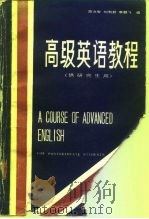
- 高级英语教程
- 1987 北京市:北京工业学院出版社
-

- 英语教学新概念
- 1995年01月第1版 重庆出版社
-

- 高级英语教程
- 1998 湖南师范大学出版社
-

- 高级英语写作
- 1997 南京:东南大学出版社
-

- 大学英语写作中级教程
- 1994 首都师范大学出版社
-
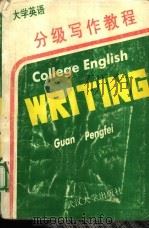
- 大学英语分级写作教程
- 1989 武汉:武汉大学出版社
-

- 高级英语教程
- 1994 南京:东南大学出版社
-
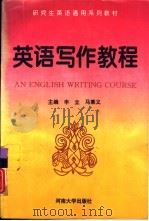
- 英语写作教程
- 1996 开封:河南大学出版社
-

- 高级英文写作教程
- 1996 北京:外语教学与研究出版社
-

- 高级英文写作教程
- 1996 北京:外语教学与研究出版社
-
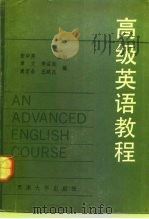
- 高级英语教程
- 1992 天津:天津大学出版社
-

- 《大学英语写作》初级教程
- 1995 北京:首都师范大学出版社
-

- 外国作家谈创作经验 上
- 1979 武汉大学中文系文艺理论教研室;武汉大学中文系资料室
提示:百度云已更名为百度网盘(百度盘),天翼云盘、微盘下载地址……暂未提供。➥ PDF文字可复制化或转WORD

